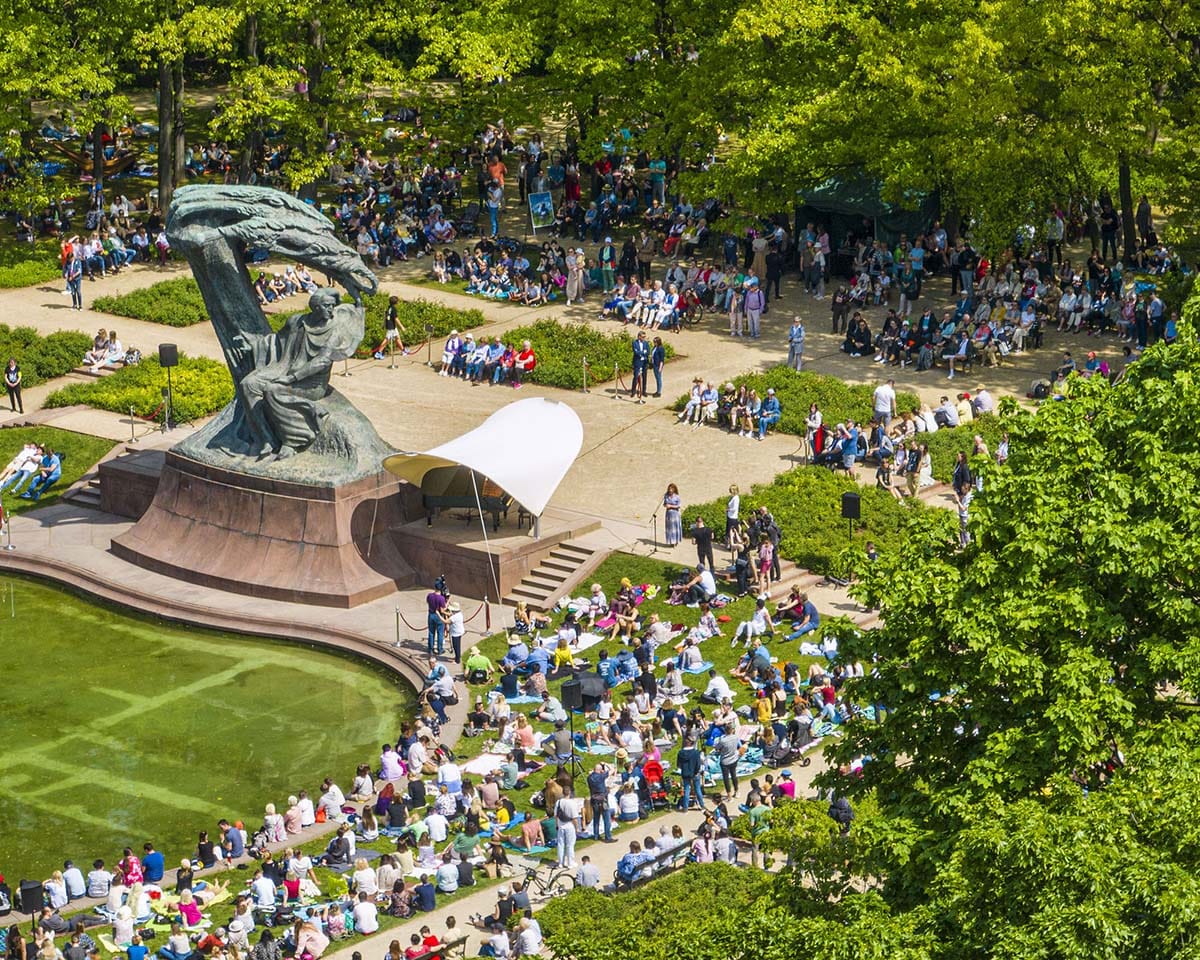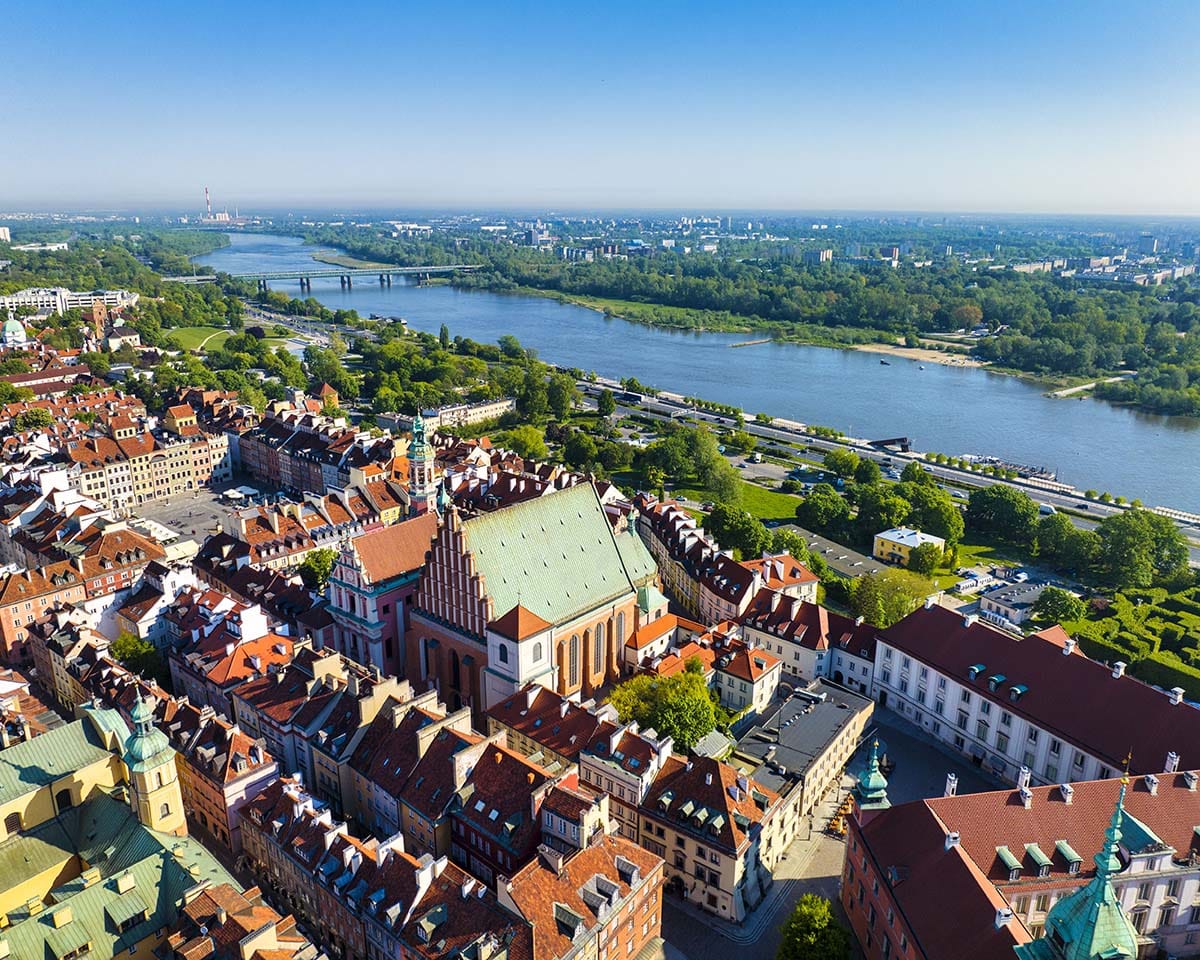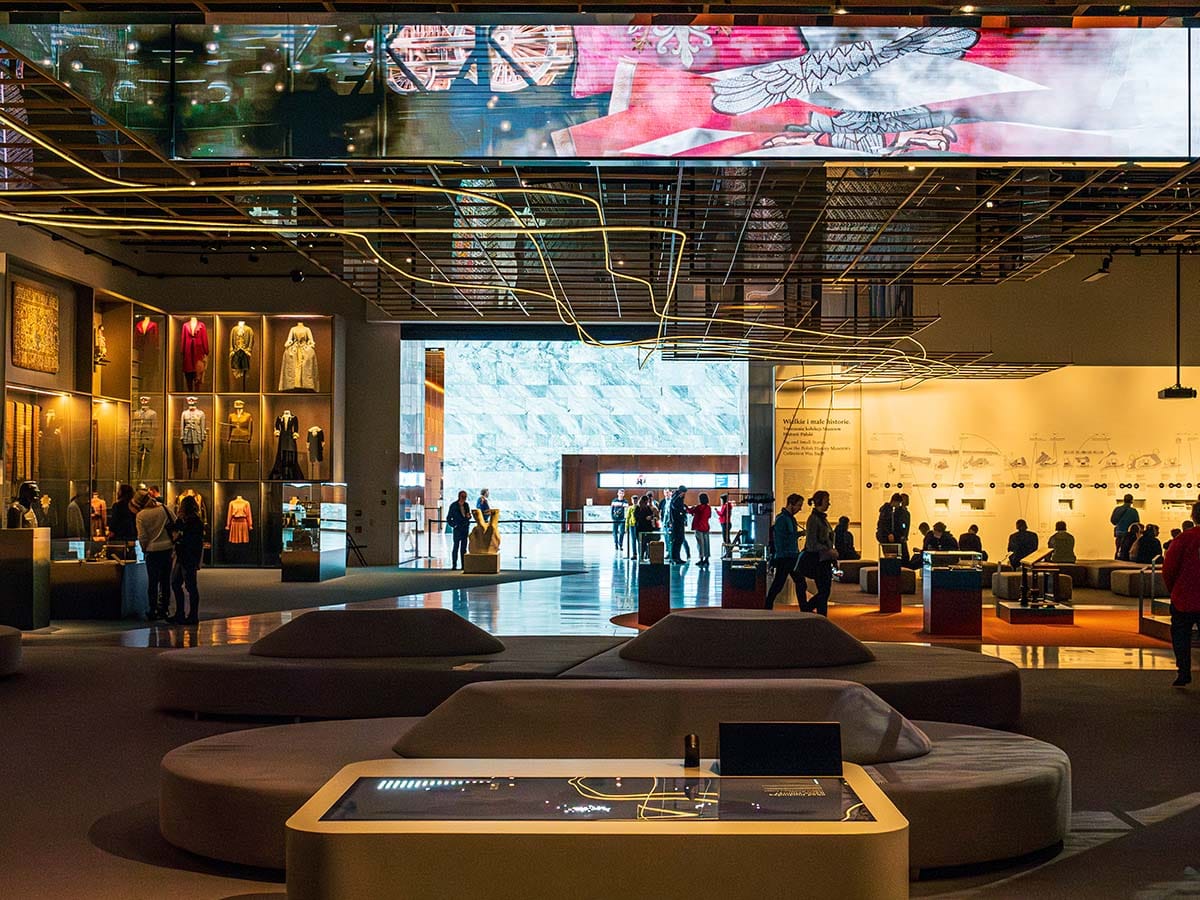In Autumn, Warsaw’s parks and streets glitter with the colours of falling leaves: gold, copper, red, orange and purple.

Warsaw is extremely photogenic and this season is the perfect time of year to visit the city. Restaurants serve special dishes inspired by seasonal ingredients and visitors can discover the richness of Polish traditions.
A walk around Warsaw reveals much about the city, its history and its people. Royal Łazienki Park is one of the most beautiful park and palace complexes in Europe, the Saxon Garden is the oldest public park in the capital and Skaryszewski Park in the Praga district is a true delight…
Bridges spoke with Dorota Huk-Królikowska, Deputy Director, Warsaw Tourism Office about Warsaw’s growing appeal as a tourist destination like no other.
Bridges: Tell us about your role as the Deputy Director of the Warsaw Tourism Office?
Huk-Królikowska: I started this role in September, but I have been working here for almost 9 years. Our office is part of the City Hall, and we are tasked with promoting Warsaw as a top tourist destination at home and abroad.
We conduct research and analyses on tourism trends and are heavily involved in social media promotion. We also work with foreign media, influencers, and TV crews who visit Warsaw all year round.
Additionally, we publish brochures for tourists and manage a Tourist Information Point to bring the city to life for visitors from around the world. We also run the official tourist website www.go2warsaw.pl
What are some of the main attractions you promote for Warsaw?
Warsaw is an incredibly diverse city. While we have the historic charm of the Old Town, we are also a vibrant, modern city undergoing rapid development.
Warsaw is an incredibly diverse city. While we have the historic charm of the Old Town, we are also a vibrant, modern city undergoing rapid development.
Dorota Huk-Królikowska, Deputy Director, Warsaw Tourism Office
Education is a significant part of our identity, with over 200,000 students and several universities and high schools. Warsaw offers a vast array of green spaces, with over 40 percent of the city covered by greenery, including forests and parks.
How is Warsaw’s connectivity and infrastructure evolving?
Connectivity and transportation are crucial for any city. We have conducted surveys that show residents appreciate living in Warsaw due to its quality infrastructure, which continues to improve. Sustainability is also a key focus for us; we aim for thorough and thoughtful development rather than rapid expansion.
How does Warsaw maintain its green spaces amidst development?
With over 40 percent of Warsaw dedicated to green areas, including more than 100 parks and nearby forests, we are a truly ‘green-city.’
For instance, Kampinos National Park is just outside the city and easily accessible. This commitment to green spaces makes Warsaw unique among European capitals.
How did the pandemic impact tourism numbers from Japan and other countries?
We saw a decline in the number of Japanese tourists post-pandemic. In 2019, we had 26,000 Japanese visitors, which was only 2 percent of our total foreign tourists. In 2023, that number dropped to around 8,800. While the pandemic and travel restrictions, including longer flight routes due to geopolitical issues, have affected tourism, we are confident international travellers will return to Warsaw to discover the city and the passion we feel in the heart of Poland’s capital city.
Foreign tourists arrivals have almost reached pre-pandemic levels and we are looking forward to Japanese travellers to come back to Warsaw.
Is there anything you would like to convey to potential tourists from Asia?
We are eager to welcome more tourists from Asia. Japanese travellers, in particular, appreciate European culture, and Warsaw has much to offer, including its rich history and musical legacy with figures like Chopin. Warsaw was a home town to Fryderyk Chopin. There are many places around the city that are connected with the great composer; among them, the Fryderyk Chopin Museum and the Chopin Monument at the Royal Łazienki Gardens. Next year Warsaw will be the venue to the XIX International Chopin Piano Competition. We are working closely with Polish Tourism Organization to enhance our appeal and attract more visitors to Warsaw.
How does the Warsaw Tourism Office view the role of tourism in the city?
Tourism is vital for Warsaw. It brings both economic benefits and enriches cultural exchanges. Surveys show that over 80 percent of locals agree tourism positively impacts the city. As the office, we strive to ensure visitors have an excellent experience here while continuously working to raise awareness of Warsaw as a top destination.
What are the Warsaw Tourism Office’s plans for the future?
Our ongoing initiatives include promoting the city’s unique attractions and improving tourist infrastructure. We aim to continue enhancing Warsaw’s reputation as a vibrant, sustainable and welcoming city. With Poland’s upcoming EU presidency in 2025, we have further opportunities to showcase the best of what Warsaw has to offer.







